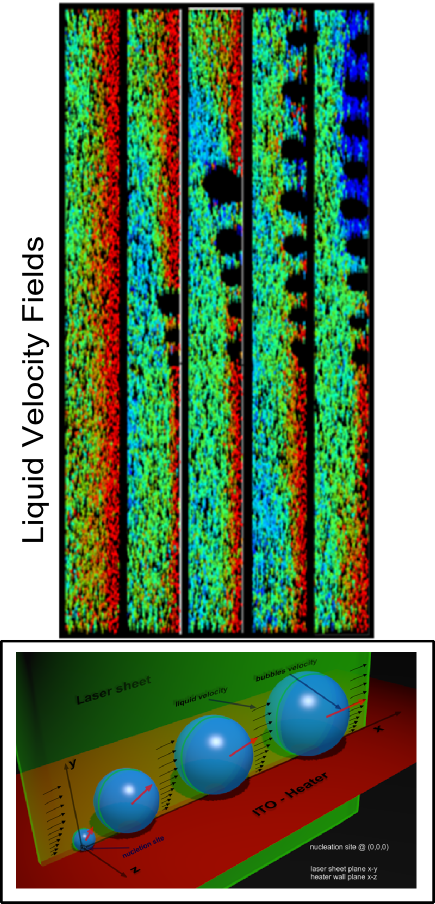Subcooled flow boiling experimental benchmarks in simple geometries are part of an ongoing two-phase flow fundamental research performed at the Thermal-hydraulics laboratory in the Nuclear Engineering Department. State-of-the-art visualization techniques are simultaneously implemented, including:
- particle tracking velocimetry (PTV),
- high speed cinematography (HSC), and
- high speed infrared thermometry (HSIR-T).
The visualization techniques are complemented with “traditional” point measurement probes, such as thermocouples, pressure transducers, and optical probe sensors to study the two-phase flow dynamics in subcooled boiling. The main goal of these benchmarks is to provide qualitative and quantitative information of the vapor or gas bubbles (void) influence on important two-phase flow parameters such as: void influence on the wall-heat transfer, influence on the neighboring liquid turbulence and influence on the drag.
These experiments are required for the improvement and development of CFD and DNS two-phase flow mechanistic models and empirical correlations.


